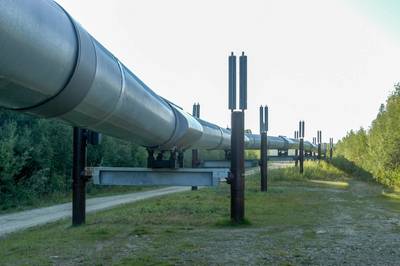U.S. Oil Boom Starts to Cool, Tightening Global Market: Kemp
U.S. oil production is running into capacity constraints, which are starting to have a material impact on the global availability of crude, causing the market to tighten and putting upward pressure on prices.
The biggest problem is the lack of sufficient pipeline capacity to move oil from shale wells in western Texas and eastern New Mexico to refineries in the Midwest and export terminals on the Gulf Coast.
But production in the Permian Basin has also been constrained by shortages of labour, equipment and materials, which have pushed drilling, pressure pumping and completion costs sharply higher.
The most obvious impact has been a sharp drop in the price that Permian producers receive for their oil compared with other benchmarks, especially Brent.
West Texas producers are currently receiving just $55 per barrel for oil delivered to Midland, in the heart of the Permian, compared with $79 for North Sea Brent.
The massive discount reflects the twin difficulties of moving the crude out of the Permian to the main inland trading hub at Cushing in Oklahoma or down to the refineries and export terminals on the coast.
Midland crude is currently trading at discount of $14 per barrel compared with Cushing, while Cushing is itself priced at a further discount of $10 to Brent.
Midland has traded at an average discount to Brent of more than $12 per barrel this year, up from $4 in 2017 and less than $1 in 2016, and the price differential is steadily worsening.
Midland prices have mostly been falling this year while Brent has climbed, leaving Midland up by just $10 per barrel (22 percent) since the end of June 2017 while Brent has risen by $32 (68 percent).
Easing off the Accelerator
Softening Midland prices have already eased the region’s drilling frenzy, with the number of rigs drilling in the Permian flat over the last three months, after rising by more than 110 in the previous year.
Well completions, which are more relevant for production, also show signs of stabilising in recent months, after increasing fairly consistently over the two previous years (“Drilling productivity report”, EIA, August 2018).
Since the Permian Basin has been the biggest contributor to U.S. oil output growth in the last two years, the slowdown is starting to temper expectations for further increases in the rest of 2018 and through 2019.
The U.S. Energy Information Administration now expects U.S. crude production in 2018 to average 10.66 million barrels per day (bpd), down from 10.79 million bpd at the time of its July forecast.
The agency has cut its prediction for 2019 even more sharply to 11.50 million bpd, down from 11.86 million bpd at the time of its May forecast (“Short-Term Energy Outlook”, EIA, September 2018).
Slower growth in U.S. production, when combined with strong demand, production problems in Venezuela and other countries, and the re-imposition of sanctions on Iran, is enough to tighten the global market in late 2019.
By John Kemp








